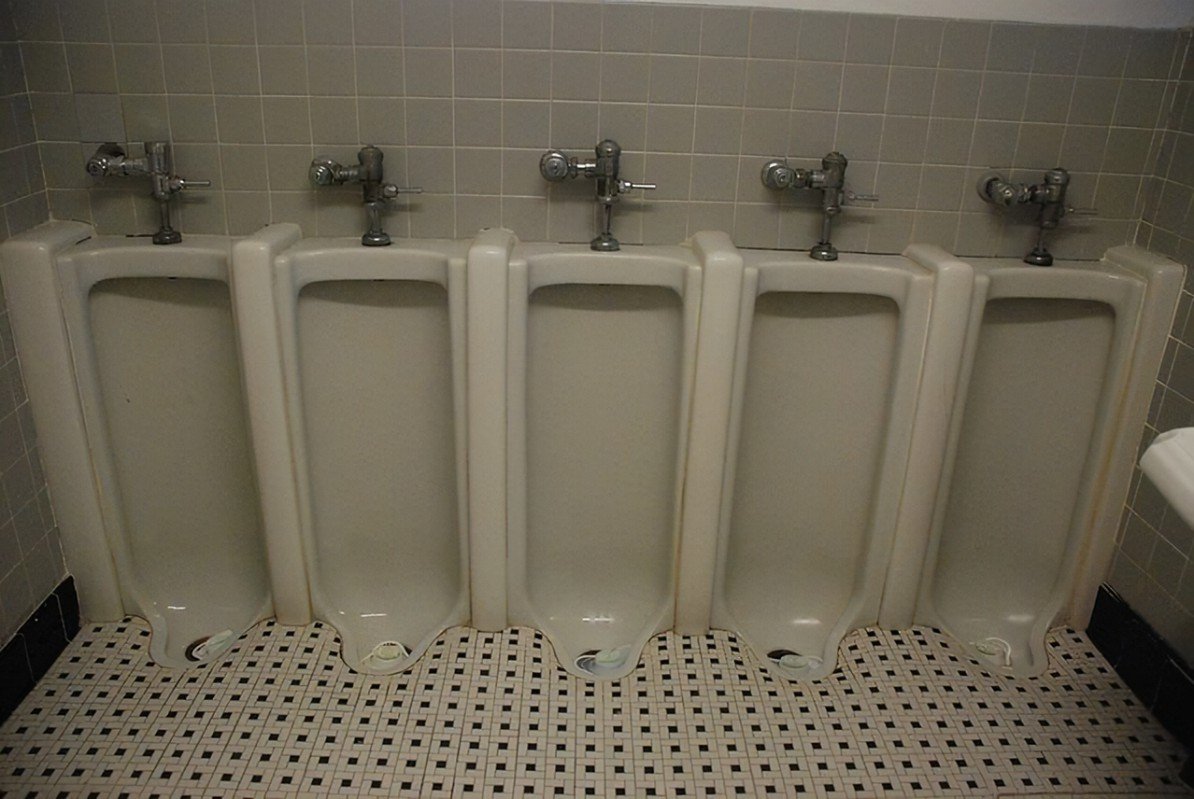Do Your Urinals Look Like This? If So, Read This.
Most people only think about changing or updating their urinals once they have problems with their existing urinals. Or they already update and retrofit their existing restrooms frequently enough that the issue never comes to light.
Either way, here is what we need to know: view old urinals like old cars. The longer you have them and keep driving them, the more likely they will have problems.
And just like an old car may break down at the worst opportune time, don’t be surprised if an old urinal does the same, breaking down at a time when the restroom is being heavily used. This happens at sporting events all the time.
Urinals, based on federal standards, have a 25-year life cycle based on required flush volume. However, in recent years, reduced flush volume mandates have been introduced three times. All retrofits must adhere to the new standards.
A lightly used urinal may last even longer. However, the key concern with older urinals is that they typically use a lot of water per flush, potentially more than they were designed to use. This tells us that the cost of owning the older urinal may become an issue due to increasing water rates around the country.
The size of the urinal can also be a factor in its longevity. Traditionally sized urinals tend to be easier to replace. Many urinals are now available that will comfortably “fit” where the old urinal was installed.
Larger urinals, on the other hand, may be harder to replace, making the process more complicated and costly. As a result, many building owners and managers tend to keep these larger urinals as long as they can even if, as mentioned earlier, the cost of ownership is continually increasing.
Then there are the “old school” full-stall or full-length urinals like in the picture above. These are urinals that reach and are supported by the floor. You still find these in older schools, libraries, and church facilities. Typically, these urinals remain in place for years for one key reason: removing them would require significant restroom retrofitting and construction.
Building owners or managers nurse full stall/full length urinals along, making repairs as needed, and waiting until they have the funds to renovate the entire restroom before replacing these old dinosaurs - I mean urinals.
This tells us how long urinals typically last and why some building owners hang on to them. But there are usually four factors at play when it comes to deciding when to replace a urinal. These are the following:
Chips and cracks. With older water using urinals, chips and cracks can build up in the water disbursement rims. This can cause germs and bacteria to build in the rims, which can cause odors to be released. This can be unsightly as well as unhealthy.
Flush valves. These need constant care and attention, especially in areas of the country that have hard water. Hard water can clog up flush valves. One Florida plumber said he was called frequently to fix the flush valves on the old school full-length urinals installed in a church. Over time, the flushing system on these urinals would break down, and the water would run continuously, non-stop. After so many visits, the church decided it would be less costly to retrofit the entire restroom than call the plumber so often.
Hygiene concerns. This has always been a concern, but these concerns mounted during the pandemic. The problem is that older water using urinals release aerated droplets as they are used. If these droplets are contaminated, they can become airborne and potentially spread disease.
Water Efficiency. Many building owners and managers are now concluding that using 35,000 gallons of water per year with a traditional urinal is not an efficient way to use water. What typically happens is they replace these water-hungry urinals with waterless urinals.
Water consumption is reduced, there are no flush valves to repair, no aerated droplets, and water utility bills are reduced. Overall, a win-win-win situation.










